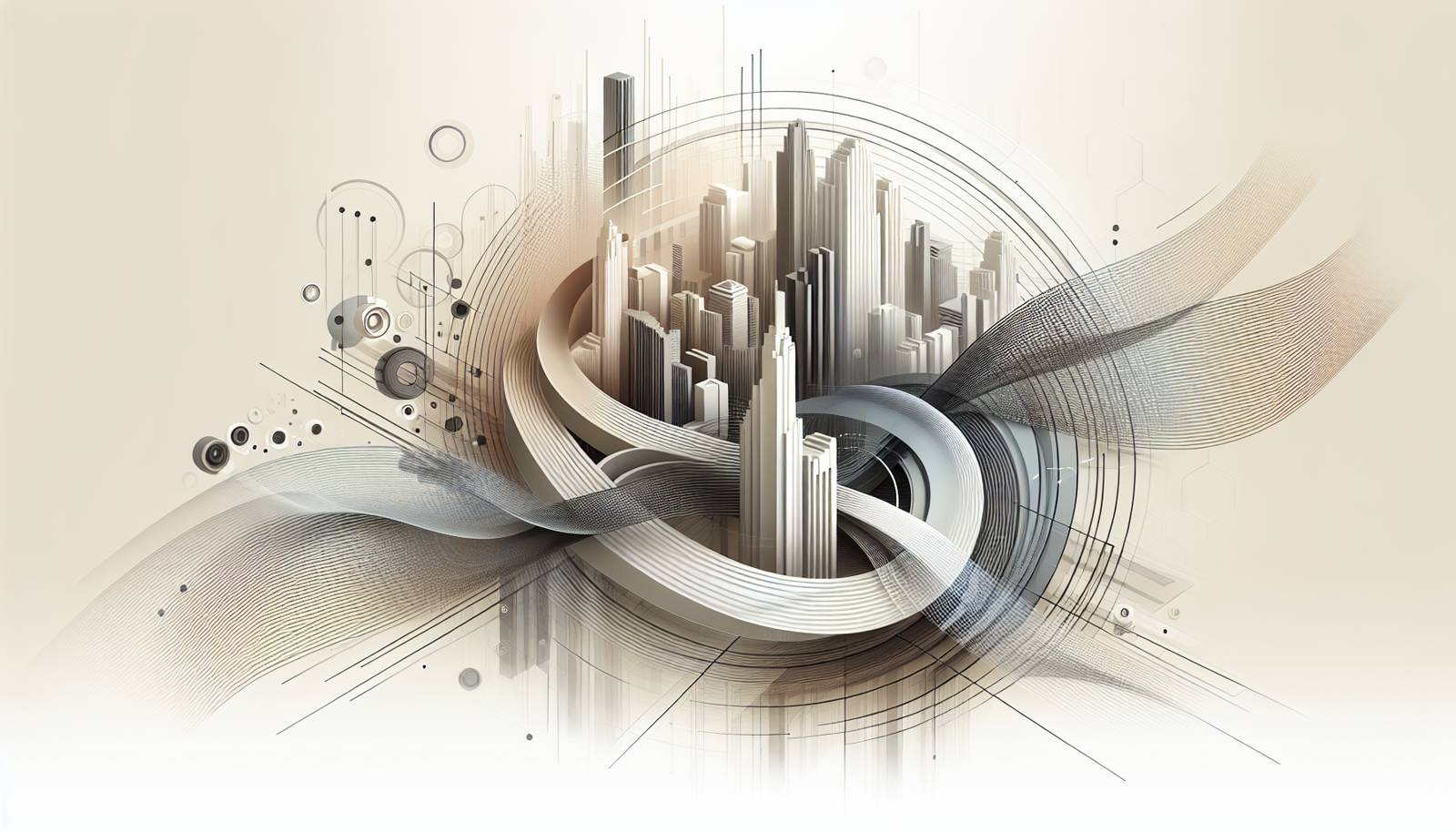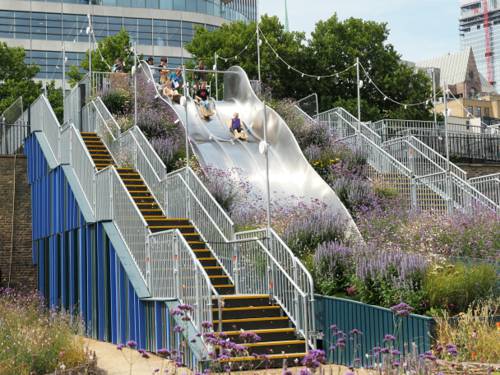
FAQ About The Evolution of Soundscapes in Public Spaces

What is a soundscape in public spaces?
A soundscape in public spaces refers to the combination of sounds that arise from the environment and human activities in an area, such as parks, streets, or plazas. These sounds can include natural elements like birdsong, water flowing, and wind, as well as human-made noises such as traffic, conversations, and music. Soundscapes play a significant role in shaping people's experiences and perceptions of a space.

How have soundscapes in public spaces evolved over time?
Soundscapes in public spaces have evolved significantly with advancements in urban planning, technology, and cultural changes. Originally, soundscapes were predominantly natural and quiet, but the industrial revolution introduced louder, more mechanized sounds. In recent years, there's been a shift towards managing soundscapes to enhance public enjoyment and health, incorporating design elements like noise barriers and public art installations that emit sound, and promoting interactions with natural sound elements.

Why is the study of soundscapes important in urban planning?
Studying soundscapes is crucial in urban planning as it helps create more livable, enjoyable, and sustainable environments. A well-designed soundscape can enhance the quality of life by reducing noise pollution, fostering social interactions, and enriching cultural expressions. By integrating soundscape considerations, urban planners can improve mental well-being, encourage tourism, and promote a sense of place and identity within communities.

What are common elements found in urban soundscapes?
Common elements found in urban soundscapes include natural sounds like birdsong, wind, and water features, as well as human-generated sounds such as vehicle traffic, construction work, public transportation, conversations, and music. These elements interact in complex ways, contributing to the overall acoustic experience of a public space.

How do soundscapes influence human behavior in public spaces?
Soundscapes have a profound impact on human behavior in public spaces. Pleasant soundscapes can encourage social interaction, enhance mood, and improve focus, while unpleasant ones can lead to stress, anxiety, and avoidance of areas. Well-designed soundscapes can make public spaces more inviting, safe, and engaging by promoting positive acoustic environments that cater to the needs of the community.

What role do cultural shifts play in the evolution of soundscapes?
Cultural shifts influence how soundscapes are perceived and valued. Changes in lifestyle, technology, and societal norms alter the sounds that are integrated into public spaces. For example, the rise of mobile technology and social media has affected how sound is experienced and prioritized, leading to the design of soundscapes that balance connectivity and tranquility. Cultural events and movements also shape soundscapes by introducing new sounds and promoting certain acoustic aesthetics.

How do soundscapes enhance experiences in public spaces?
Soundscapes enhance experiences in public spaces by creating atmospheres that reflect the identity and purpose of an area. For instance, background music or natural sounds in parks can create a relaxing environment, while lively street performances can energize an urban plaza. By carefully designing soundscapes, cities can provide immersive experiences that engage people, making spaces more dynamic and memorable.

What are some challenges faced in managing soundscapes in public spaces?
Managing soundscapes in public spaces involves challenges such as balancing varied noise sources, addressing noise pollution, and meeting diverse community needs. Urban planners must consider conflicting uses of space, such as residential areas versus commercial zones, and regulate sound levels to prevent disturbances while fostering a vibrant atmosphere. Additionally, technological and financial constraints can limit the implementation of effective soundscape management strategies.

What technologies are used to design soundscapes in urban environments?
Technologies used to design soundscapes in urban environments include sound mapping, digital simulations, noise monitoring systems, and sound masking devices. These tools help analyze and control sound environments by identifying sources of noise, predicting sound behavior, and implementing sound management solutions. Cutting-edge technologies such as smart urban sound systems can dynamically adjust soundscapes in real-time, enhancing urban experiences.

Can soundscapes influence mental health?
Yes, soundscapes can significantly influence mental health. Pleasant and well-managed soundscapes can reduce stress, improve mood, and promote relaxation and well-being. Conversely, excessive noise pollution and poorly designed soundscapes can lead to mental fatigue, irritability, and increased stress levels. Urban planners aim to create soundscapes that contribute positively to mental health by ensuring a balanced and harmonious acoustic environment.

How can cities incorporate natural elements into urban soundscapes?
Cities can incorporate natural elements into urban soundscapes by designing green spaces, water features, and wildlife habitats. These elements introduce soothing natural sounds like water flowing, leaves rustling, and birds singing, which can mitigate the effects of urban noise pollution. Implementing biophilic design principles helps integrate nature into the urban environment, enhancing both the aesthetic and acoustic quality of public spaces.

What is the difference between noise and soundscape?
Noise typically refers to unwanted or disruptive sound that can negatively impact quality of life, whereas a soundscape encompasses all the sounds in an environment, both pleasant and unpleasant, that contribute to an area's acoustic character. The concept of soundscape considers the positive role that certain sounds can play in enhancing human experience and well-being in public spaces.

How do soundscapes reflect the identity of a city or region?
Soundscapes reflect the identity of a city or region by encapsulating the unique auditory elements that define a place. These might include local languages, traditional music, street life, and natural sounds indigenous to the area. By understanding and preserving these elements, urban planners and communities can reinforce a city's cultural heritage and create distinctive, authentic public spaces.

What role does community involvement play in designing urban soundscapes?
Community involvement is crucial in designing urban soundscapes, as it ensures that the unique needs and preferences of local residents are addressed. Engaging with the community can reveal insights into how people experience sound in their environment and what changes are desired. Participatory approaches lead to more inclusive and acceptable soundscape designs that enhance public satisfaction and quality of life.

Can soundscapes be used to attract tourism?
Yes, soundscapes can be intentionally designed or preserved to attract tourism by creating unique and memorable auditory experiences. Cities can utilize music festivals, sound installations, and audio tours to highlight cultural heritage and contemporary attractions. By promoting an engaging acoustic environment, destinations can enhance their appeal and offer tourists a distinctive and enriching experience.

How does noise pollution affect urban soundscapes?
Noise pollution significantly affects urban soundscapes by overwhelming the desired or pleasant sounds with excessive, harmful noise. Common sources include traffic, industrial activities, and construction, which can contribute to stress, hearing damage, and reduced quality of life. Urban planners work to mitigate noise pollution through policies, sound barriers, and the integration of green spaces to restore balance to soundscapes.

What is sound masking, and how is it used in public spaces?
Sound masking is the addition of background sound to an environment to cover or reduce the perception of unwanted noises, creating a more comfortable acoustic environment. In public spaces, it is used to improve privacy within open areas, reduce the impact of disruptive noises, and enhance focus and wellness. Technologies such as speakers and sound-emitting installations strategically placed in urban settings are commonly used for sound masking.

How do seasonal changes affect soundscapes in public spaces?
Seasonal changes can significantly affect soundscapes in public spaces, as different weather conditions and natural cycles bring variations in sounds. For example, summer might introduce more human activity and louder wildlife, while winter might lead to quieter environments due to snowfall absorbing sounds. Understanding these seasonal variations can help urban planners design adaptive soundscapes that accommodate shifts in acoustic patterns throughout the year.

Are there any laws or regulations governing soundscapes in urban areas?
Many cities have laws and regulations in place to govern soundscapes and control noise pollution in urban areas. These regulations typically address permissible sound levels, zoning requirements, and specific rules for noise-generating activities. Urban planners and policymakers work to enforce these laws to ensure soundscapes contribute positively to quality of life while protecting public health and well-being.

How can sound art contribute to urban soundscapes?
Sound art can enrich urban soundscapes by introducing creative and intentional auditory features, enhancing the cultural and aesthetic appeal of public spaces. Artists and planners collaborate to create installations that interact with existing sound environments, making spaces more engaging and reflective of cultural narratives. Such art can stimulate public interest, offer unique experiences, and cultivate a deeper connection to a location.
